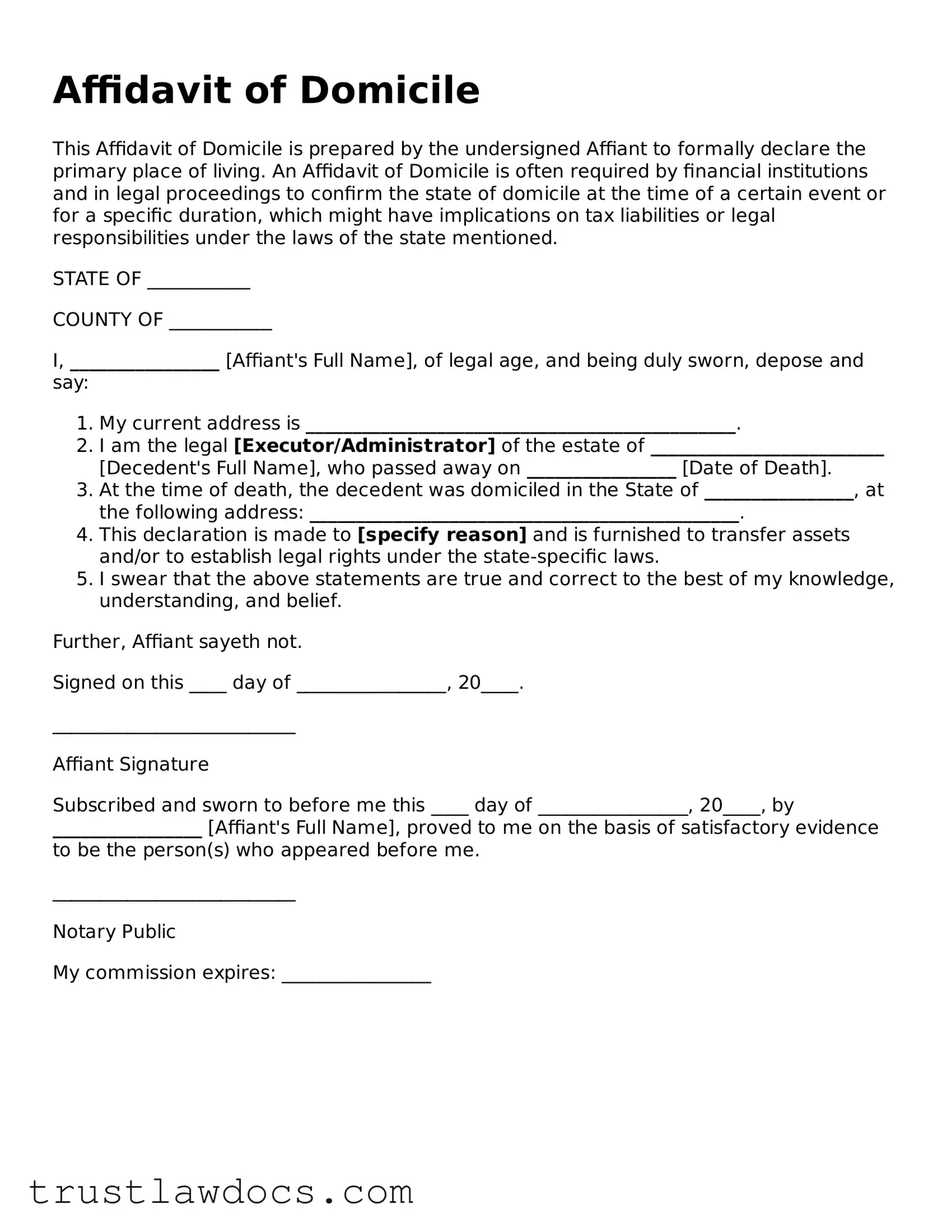The Affidavit of Domicile shares similarities with a Death Certificate. Both documents are vital for the administration of estates and the transfer of assets following an individual's death. While the Affidavit of Domicile declares the legal residence of the deceased at the time of death, crucial for tax purposes and legal matters, the Death Certificate officially records the date, location, and cause of death. Each serves as a legal requirement in the settlement of the deceased's affairs, facilitating the execution of wills and the distribution of the estate to beneficiaries.
Comparable to the Affidavit of Domicile, a Will is a foundational document in estate planning and settlement. A Will outlines the deceased's wishes regarding the distribution of their assets and may specify the desired legal residence for estate administration purposes. Whereas the Affidavit of Domicile certifies an individual's legal domicile at death, influencing jurisdictional matters, a Will communicates the decedent's intentions for their estate, appointing executors and guardians as necessary.
A Trust Document also parallels the Affidavit of Domicile in its role within estate planning and execution. Trust Documents dictate terms for managing and distributing an individual’s assets, often bypassing the probate process, similar to how the affidavit determines the state laws applicable to the deceased's estate. The domicile stated in the affidavit can affect the administration of trusts, especially regarding state-specific tax implications and legal considerations.
The Power of Attorney (POA) form, while active during the grantor's lifetime, shares its legal importance with the Affidavit of Domicile. A POA grants an individual the authority to make decisions on behalf of another, potentially including declarations about domicile for various purposes. In contrast, the affidavit confirms the deceased's domicile posthumously, guiding estate settlement. Both documents hold significant sway in legal and financial arenas, impacting decisions related to assets, healthcare, and personal affairs.
Just like the Affidavit of Domicile, the Real Property Deed is crucial in confirming legal statuses tied to estate management. While the deed verifies the ownership and transfers of real estate -- specifying details about the property and its holders -- the affidavit asserts the decedent's domicile, affecting property succession laws and taxation. These documents collectively ensure that real estate and other assets are transferred in accordance with legal stipulations and the decedent's residency status.
Similarly, the Vehicle Title holds a comparable function to the Affidavit of Domicile but in the context of personal property. Vehicle titles document the legal owner of a vehicle, necessary for the sale or transfer of ownership. When an individual passes away, the affidavit's declaration of domicile can affect how vehicles and other personal property are distributed, based on the decedent’s state of residence and the corresponding laws. Both forms play integral roles in the proper allocation of personal and real assets following death.
The Tax Return Document, especially the final return filed after an individual's demise, works in tandem with the Affidavit of Domicile to ensure the accurate assessment and payment of taxes. While the tax return details income, deductions, and tax liabilities up to the point of death or for the deceased's estate, the affidavit establishes the legal domicile, which determines the state tax obligations. These documents together assist in wrapping up the financial responsibilities of the deceased, providing a clear understanding of the tax implications based on their domicile.
